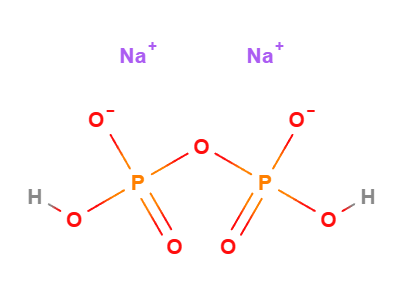Check the ingredients!
... live healthy!


| "Descrizione" by Frank123 (12008 pt) | 2023-Sep-28 16:39 |
| Evaluation | N. Experts | Evaluation | N. Experts |
|---|---|---|---|
| 1 | 6 | ||
| 2 | 7 | ||
| 3 | 8 | ||
| 4 | 9 | ||
| 5 | 10 |
Disodium dihydrogen pyrophosphate is a chemical compound, a sodium salt of pyrophosphoric acid.
The name describes the structure of the molecule.
Description of raw materials used in production.
Step-by-step summary of its industrial production process.
Form and color.
It appears as a white or colorless crystalline powder.

Commercial applications:
Food Preservative. Disodium dihydrogen pyrophosphate is used as a preservative in many food products to extend their shelf life.
Texture Improvement. It's often added to potato-based products to maintain color and prevent blackening.
Acidity Regulator. It functions as a pH regulator in various food preparations.
Meat Industry. Used as a stabilizing agent and to enhance the texture of meat-based products.
Leavening Agent. In some baked goods, it can serve as a leavening agent.
Food Research. It's being investigated for potential new applications in the food industry and to better understand its properties.
 |  |
| Evaluate |